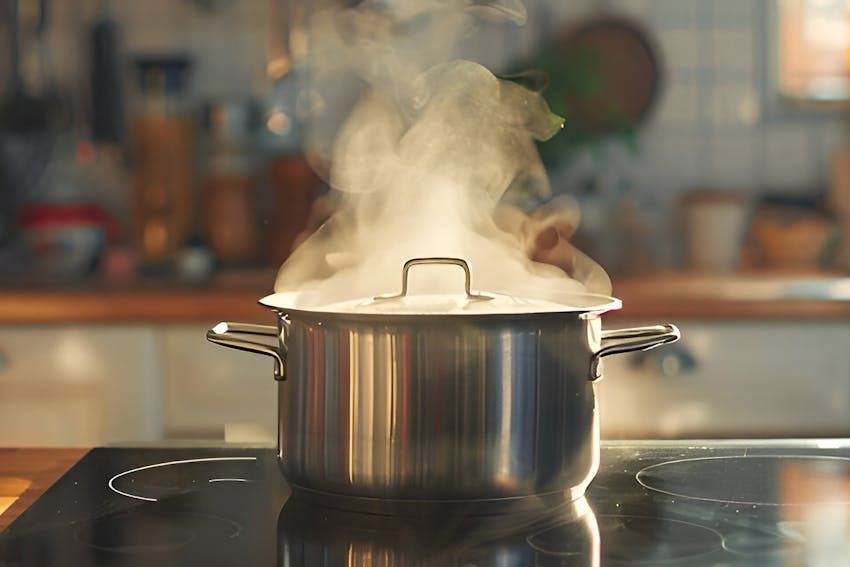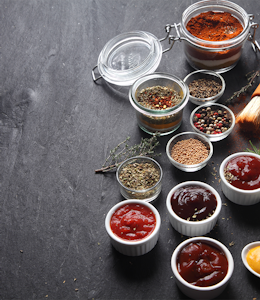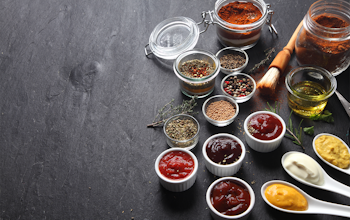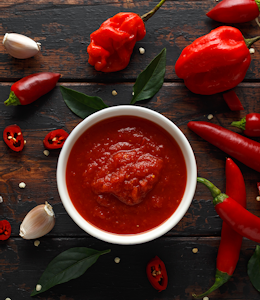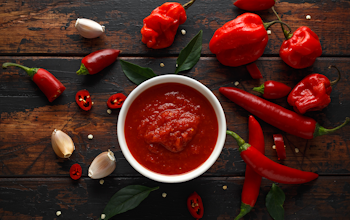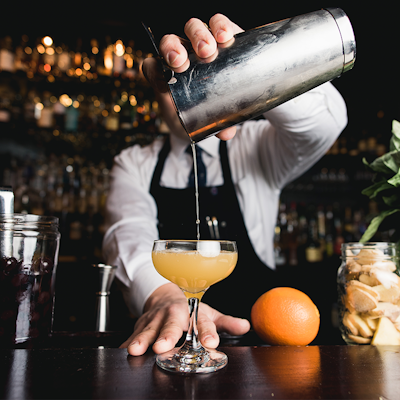Basic sauces for cooking
What are the 5 mother sauces? They’re the basic sauces to have when it comes to cooking just about anything, the building blocks of cuisine around the globe. And that’s why we’re rounding up what they are, their ingredients and the best way to make them.
The 5 mother sauces are:
- Bechamel sauce
- Veloute sauce
- Espagnole sauce.
- Tomato sauce (sauce tomate)
- Hollandaise sauce
Now let’s find out more about them...
Bechamel sauce
What is bechamel sauce?
Bechamel or béchamel sauce is a French, roux-based sauce made by cooking butter and white flour together in a saucepan and gradually adding milk. It takes its name from the chief steward to King Louis XIV of France, Louis de Béchameil, and its first known record of the sauce was in 1651’s Le cuisinier françois by François Pierre de La Varenne - though in that case the name was not actually given as bechamel.
That came in The Modern Cook by Vincent La Chapelle in 1733.
Properly prepared bechamel should have a silky, creamy texture and a medium to thick consistency.
It has a bland flavour, and is the starting point for many other sauces and dishes, though is sometimes flavoured with herbs and spices and used as is.
Bechamel is used for...
Bechamel is a major component of dishes such as lasagne, croque monsieur and moussaka, and it is also used in pies and pasta bakes. It can be served over meat and vegetables, and flavoured with ingredients such as bay leaves and garlic.
In addition to being base of several soups, bechamel is often used as the base for other sauces - by adding cheese it becomes mornay sauce, crayfish or other seafood can be added for nantuan sauce and for soubise you mix in sauteed onions.
What are “mother” sauces?
The 5 “mother sauces” are a group of sauces from which nearly all other sauces are derived. Also known as “grandes sauces”, the list is most commonly associated with the French chef Auguste Escoffier, in his book Le guide culinaire, published in 1903.
Bechamel top tip
To avoid lumpy bechamel, make sure your milk is as ice cold as possible, and add it to the flour and butter in as small amounts as possible, to ensure it has been well combined into the mixture.
Allergy alert
All of the main ingredients in bechamel sauce are major allergens. Wheat flour is a Cereal containing Gluten, and in addition to Milk, butter is also a dairy product.
Veloute sauce
What is veloute sauce?
A veloute, also spelled velouté, sauce is a savoury sauce famous for being included in chef Auguste Escoffier’s list of the “mother sauces” of French cuisine, which was published in the early 20th century. In English the name translates to “velvet” or “velvety”, and it relates to the texture the sauce should have.
Like bechamel, veloute sauce is made with a butter-flour roux, but has the addition of a light stock - usually chicken, veal or fish stock.
Veloute ingredients
Veloute is made by heating equal amounts of butter and plain white flour until it forms a light gold paste, and gradually whisking in around a litre of stock (for 50g butter and 50g flour). Chicken stock is probably the most widely used for veloute, but depending on the intended dish, fish and veal stock may also be used. The mixed ingredients are brought to a simmer and strained before serving.
Veloute is used for...
Chicken velouté, fish velouté and seafood velouté are all traditional French dishes made with a veloute sauce. It also serves as the base for several other sauces, such as Albufera sauce (made by adding a meat glaze), allemande sauce (with lemon juice, egg yolks, and cream), and white wine sauce.
Veloute top tip
Make sure you use a very fine sieve to strain the sauce - it’s crucial to achieving that smooth velvet texture.
Allergy alert
Like bechamel, veloute contains Cereals containing Gluten and Milk - two of the 14 major food allergens.
Espagnole sauce
What is espagnole?
Also sometimes referred to as “brown sauce”, espagnole sauce was first mentioned in the 1733 cookbook Le Cuisinier moderne by Vincent La Chapelle, with a detailed recipe appearing in 1828’s Le Cuisinier parisie, written by Antonin Carême.
Espagnole - which is the French word for “Spanish”, sauce takes its richness from a mixture of meaty stock, tomato puree and mirepoix. Some people liken its flavour to Worcestershire sauce.
Espagnole ingredients
The main ingredients in espagnole sauce are a brown roux, tomato puree, mirepoix (an equal mixture of finely diced onions, carrots and celery) and meat stock - beef or veal.
It is made by gently frying the mirepoix in butter and then slowly whisking in flour to create a type of brown roux, and then adding stock, tomato puree and herbs like bay leaves and thyme.
The sauce is then brought to the boil and simmered to concentrate before being strained through a fine sieve.
Espagnole is used for...
Espagnole sauce is the base for “demi-glace”, which is served over many braised and roasted red meats. Other sauces with an espagnole base include africaine (with madeira wine, truffles, and chilli powder) and bigarade (with citrus zest and duck stock).
Espagnole sauce is also sometimes poured over fried or sauteed mushrooms.
Espagnole top tip
Espagnole uses a brown roux, which means the butter and flour are allowed to cook longer than in a regular roux - so they become a rich golden brown. This means it is easier to burn - to avoid this, cook the roux incrementally by heating and stirring then removing from the heat and allowing to cool a little while still stirring, then returning to the heat and repeating as necessary.
Allergy alert
Like other bechamel/roux-based sauces, espagnole contains Cereals containing Gluten (via flour) and Milk (via Milk and butter). Because it is also made with mirepoix, it contains Celery, another of the 14 major food allergens.
Tomato sauce (sauce tomate)
What is tomato sauce?
One of the most widely used and popular sauces in the world, tomato sauce is a sauce consisting primarily of chopped, crushed or pureed tomatoes. Most tomato sauce is Italian in origin, and uses ingredients such as garlic, oregano and red wine vinegar. The tomato sauce of the “mother sauces” however, is French, thickened with roux and flavoured with pork. It is known as sauce tomate.
Tomato Sauce ingredients
Diced, salt-cured pork, mirepoix (diced carrots, onions and celery), herbs (bay leaves, garlic, thyme), butter, flour, stock and chopped tomatoes are the ingredients of a sauce tomate. It is made by browning the meat in the pan, then adding the butter and the mirepoix. Once softened the flour is whisked in, followed by the herbs, tomatoes and stock. After bringing to the boil the sauce needs to be simmered for several hours.
Tomato Sauce is used for...
Sauce tomate is one of the most versatile and frequently used sauces in many different cuisines. It forms the base of soups, stews and meat dishes, pasta dishes, and other sauces. Sometimes additional ingredients such as cream or cheese are added to change the texture and flavour of the sauce.
Tomato Sauce top tip
Simmer your tomato sauce for at least two hours in the oven on a low temperature - this will give it a richer, more caramelised flavour than doing so on the hob.
Allergy alert
French tomato sauce is made with a mirepoix, which contains Celery - one of the major food allergens. Most French tomato sauce recipes also include butter (Milk) and flour (Cereals containing Gluten).
Hollandaise sauce
What is Hollandaise sauce?
French for “Dutch sauce”, hollandaise is a seasoned mother sauce principally made from egg yolk, melted butter, and lemon juice. Hollandaise is an emulsion sauce, triggered by the lecithin in the egg yolk combining perfectly with the butter and lemon juice (which would not usually happen).
First documented in 1651 in La Varenne's Le Cuisinier Françoi, it has a creamy, velvety texture and bright, sharp taste, and though it shares several ingredients and flavour profiles with mayonnaise, it is made with butter not oil.
Hollandaise sauce ingredients
The main ingredients in hollandaise sauce are egg yolk, butter and lemon juice, with additional ingredients being water, salt and pepper (sometimes chilli pepper or white pepper). The sauce is made by beating egg yolks before combining with butter (usually melted butter), and lemon juice. A small amount of water and seasoning is added while the ingredients are gently heated, mixing all the time.
Hollandaise sauce is used for...
Hollandaise sauce is commonly associated with serving over steamed or blanched asparagus and other such vegetables, and is a key component of Eggs Benedict.
It is also eaten with poached or steamed fish (particularly salmon) or grilled chicken.
Hollandaise sauce top tip
Temperature is key to making hollandaise sauce - if you see steam rising from the eggs whilst cooking, remove from the heat and whisk vigorously for half a minute to prevent them from overcooking.
Allergy alert
Eggs are the main ingredient in a hollandaise sauce, and they are also one of the 14 major food allergens. Another ingredient is butter, a derivative of Milk and therefore another allergen.
You may also be interested in…
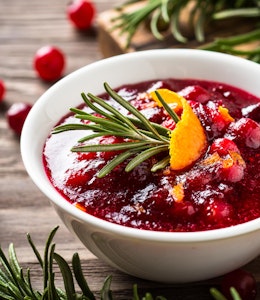
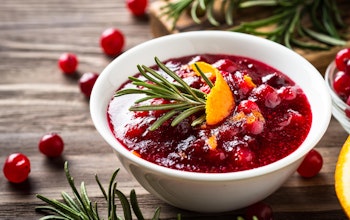
You may also be interested in…
